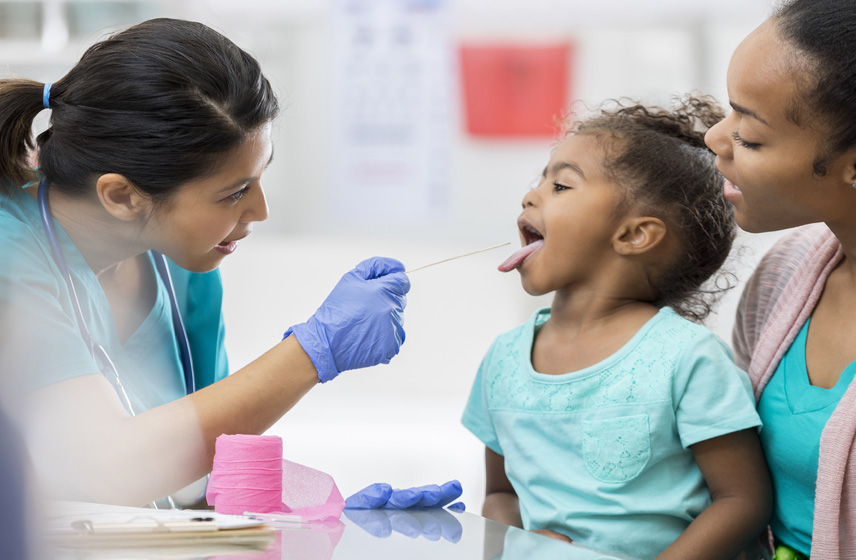Clostridium perfringens is a common food poisoning caused by C. perfringens bacteria. It causes diarrhea and stomach cramps. You usually get it from eating contaminated meat or poultry that’s been left out for too long. C. perfringens food poisoning usually isn’t serious and goes away on its own.
Advertisement
Cleveland Clinic is a non-profit academic medical center. Advertising on our site helps support our mission. We do not endorse non-Cleveland Clinic products or services. Policy
Clostridium perfringens (C. perfringens) food poisoning is an illness you can get from eating food contaminated with C. perfringens bacteria. It’s usually not serious. It causes stomach cramps and watery diarrhea. Symptoms last for a day or two.
Advertisement
Cleveland Clinic is a non-profit academic medical center. Advertising on our site helps support our mission. We do not endorse non-Cleveland Clinic products or services. Policy
C. perfringens also causes more serious conditions when it infects wounds, including gas gangrene and anaerobic cellulitis.
Food poisoning from C. perfringens is common. About 1 million people in the U.S. get sick from food contaminated with C. perfringens each year.
Stomach cramps and watery diarrhea are common symptoms of C. perfringens food poisoning. It usually doesn’t cause vomiting or fever. Symptoms start six to 24 hours after you eat contaminated food.
Bacteria cause C. perfringens food poisoning. When you eat food contaminated with the bacteria, they release toxins into your gastrointestinal tract (intestines). The toxins cause inflammation (enteritis), leading to diarrhea and cramping.
You can get C. perfringens from eating food that’s been sitting out, even if it’s just for an hour or two. C. perfringens can create spores, which are like a protective suit that allows bacteria to survive extreme conditions, like heat or cold. These spores can’t reproduce, but they can contaminate food, even after it’s cooked. The bacteria then reproduce again when the food gets cool (between 40 and 140 degrees Fahrenheit, or 4 and 60 degrees Celsius) for an hour or longer without being rewarmed or refrigerated.
Advertisement
C. perfringens is most commonly found in gravies, red meat (beef, pork) and poultry (chicken, turkey). It’s less common in fish and vegetables.
C. perfringens food poisoning rarely leads to complications. But there’s a small risk of serious illness, including:
Providers usually diagnose food poisoning based on your symptoms. If they need to test you, you’ll provide a stool (poop) sample. Your provider will send your sample to a lab, where they’ll test it for C. perfringens and other germs that can make you sick. If there’s an outbreak of sickness, health officials may test food to find the source of the bacteria.
There’s no specific treatment for food poisoning caused by C. perfringens. It usually goes away on its own within a day or two. Drink plenty of fluids to prevent dehydration.
If you’re very sick, your provider will treat you with antibiotics. This usually isn’t necessary.
C. perfringens food poisoning usually isn’t serious. Even without treatment, you should feel better within a couple of days.
You can avoid food poisoning by taking precautions when heating, storing and serving food, including:
Anytime you have diarrhea or are throwing up, it’s important to drink plenty of fluids to prevent dehydration. Fluids that help you stay hydrated include:
If you have diarrhea, avoid eating or drinking anything that can make it worse or lead to dehydration. This includes beverages that contain alcohol or caffeine, and high-fiber foods. Eating simple foods, like the BRAT diet (bananas, rice, applesauce and toast) might help calm your stomach.
Advertisement
See a provider if your symptoms don’t get better within a few days or if you have severe diarrhea or vomiting.
Go to the nearest emergency room if you experience symptoms of serious illness, including:
It might be helpful to ask a provider:
C. perfringens food poisoning is common. It can be unpleasant, but it’s usually not serious. Drink plenty of fluids and don’t hesitate to contact your healthcare provider if you’re not getting better within a few days.
Advertisement
Need care fast? Cleveland Clinic’s Express Care and Urgent Care locations treat everything from sprains to sinus infections — no appointment needed.

Last reviewed on 02/22/2023.
Learn more about the Health Library and our editorial process.